#architectural writing
Photo

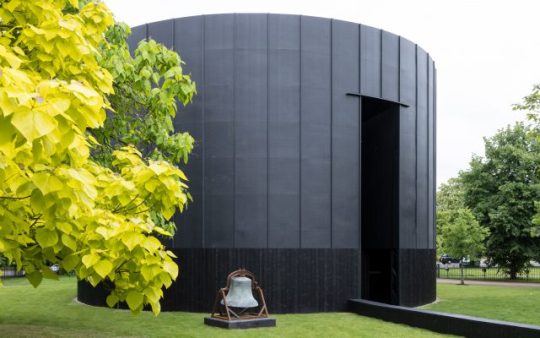

An exhibition/pavilion review:
Ringing Hollow: A Review of Black Chapel, the 2022 Serpentine Pavilion
Calvin Po
It’s perhaps an unfortunate coincidence that on my way to this year’s Serpentine Pavilion, Black Chapel, designed by Chicago-based artist Theaster Gates, I had a rather more spiritual experience when I passed by a group of street preachers on the square next to Speaker's Corner. With their Union Jack bunting draped all around their assembly, placards with JESUS IS LORD, large banners of the English flag adorned a patriotic lion and names of the all the London boroughs proudly proclaiming LONDON SHALL BE SAVED. Puncturing through even my atheistic, bemused scepticism, the blaring music and odd bursts of song had a patriotic, messianic energy that was electric. By the time I got to the Chapel I came to see, it had simply been upstaged.
Pavilions have often mattered more for the reason they are built, than the actual functions they house. From completing the composition of a Picturesque landscape, to Mies van der Rohe’s Barcelona Pavilion itself becoming a manifesto, the purpose of pavilions often exists beyond the building itself. In the case of the Serpentine Pavilion, it is more about the annual cycle of patronage by the London cultural elite as they pat the “emerging architect” of the year on the back. So I was intrigued when Gates claimed a loftier, more sacred ambition of creating a ‘Chapel’, a “sanctuary for reflection, refuge and conviviality”, for “contemplation and convening”, on top of the usual purpose as a place to sit and buy an expensive coffee.
The pavilion’s imposing 10.7m high cylindrical form, clad in all-black timber has an immediate presence as I approach. Gates claims the form references inspirations as eclectic as “Musgum mud huts of Cameroon, the Kasubi Tombs of Kampala, Uganda [...] the sacred forms of Hungarian round churches and the ring shouts, voodoo circles and roda de capoeira witnessed in the sacred practices of the African diaspora.” Perhaps the subtlety of these references is lost on me, but the Pavilion mostly evokes an industrial structure, like a water tank or gasometer, especially with its external ridges of timber battens and internal ribs of timber and metal composite trusses. Yet despite the grand gesture of an open oculus in the roof, letting light into the inky, voluminous interior, it fails to move me in that transcendental way that even a modest place of worship can.
Is it perhaps the quality of the execution? Serpentine Pavilions are often put together on hasty timescales, with six months from conception to completion. Little details give this away: boards of the decking and cladding not quite lining up, the black-stained timber a bargain basement imitation of yakisugi (Japanese technique of timber charring). Perhaps this can be forgiven of a non-permanent structure: in a nod to sustainability credentials, this year the designers have taken care to ensure the structure is demountable, down to the reusable, precast concrete foundations. But seeing that the Pavilions are almost always auctioned off to recoup the costs and relocated to the grounds of private collectors and galleries, this seems more a convenient commercial expediency, than an environmental one. Perhaps it is difficult to be spiritually moved by a structure that is sold and delivered like a commodity, with little rootedness in its physical and congregational geographies.
Or could it be the atmosphere, a lack of drama? One of Gate’s flourishes, such as his seven silvery ‘Tar Paintings’ that are suspended in the inside walls of the space like abstract icons, are a nod to his father’s trade as a roofer, and Rothko’s chapel in Houston. Yet these self-referential gestures seem lost on the throngs of sun-seeking Londoners taking brief shelter from the heat and wilted grass, with hardly anyone giving them a second glance. Most seemed more interested in the shade than symbolism. For a project that also emphasises “the sonic and the silent”, the acoustic atmosphere of the space I found wanting, perhaps because of the sound that leaks out of the two full-height openings that puncture straight through the volume: its acoustic experience had neither the reverberant, sanctified silence once expects from a chapel, nor the sonic presence that the street preachers managed to carve out of a busy corner of a London with just their vocal chords. Instead, all I heard was the low chatter of visitors going about their own business. The Pavilion is being programmed with “sonic interventions” (read: music performances), and the jury is out on whether or not the Pavilion can serve as a suitable venue for sounds with a more explicit, ceremonial intentionality.
But perhaps the coup de grâce was the decision to relocate a bell from St Laurence, a now-demolished Catholic Church from Chicago’s South Side. Sited next to the entrance, it is to be “used to call, signal and announce performances and activations at the Pavilion throughout the summer.” Gates explains this decision as a way to highlight the “erasure of spaces of convening and spiritual communion in urban communities.” But now mounted on a minimal, rusty steel frame like an objet d’art, I can’t help but feel a cruel irony that a consecrated object that once used to convene a lost community is now used as a performative affectation for the amusement of London’s arts and cultural gentry. This perhaps exemplifies a deeper ethical issue at the heart of the Pavilion’s concept: narratives of collective worship, cherry-picked from across communities and cultures, are sanitised, secularised and aestheticised in a contemporary art wrapper for the tastes of the largely godless culture crowd. The curator’s spiels of a creating “hallowed chamber”, if anything ring hollow.
As I leave Hyde Park, I pass by again the assembly of street preachers, who have now moved on to delivering a sermon. Gates said of his Pavilion, “it is intended to be humble.” Yet I can’t help but but feel how much more these preachers have achieved, with so much less.
#writing#journalism#architecture#architectural writing#architectural criticism#critique#architectural journalism#New Architecture Writers#building#building study#building review#exhibition#exhibition review
2 notes
·
View notes
Text
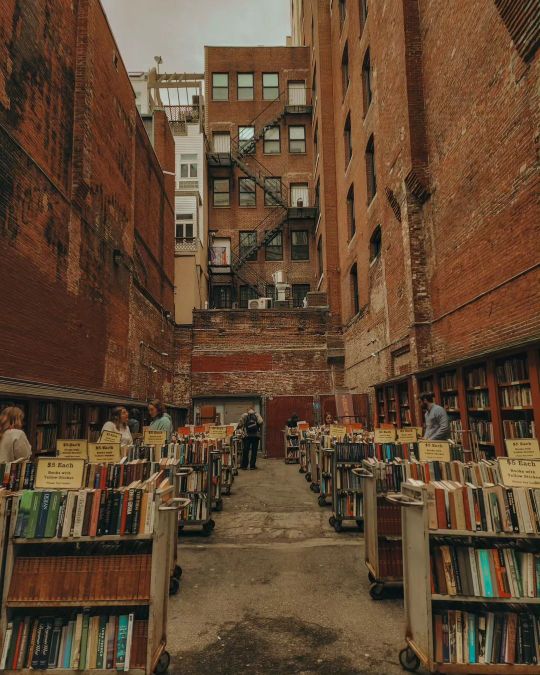
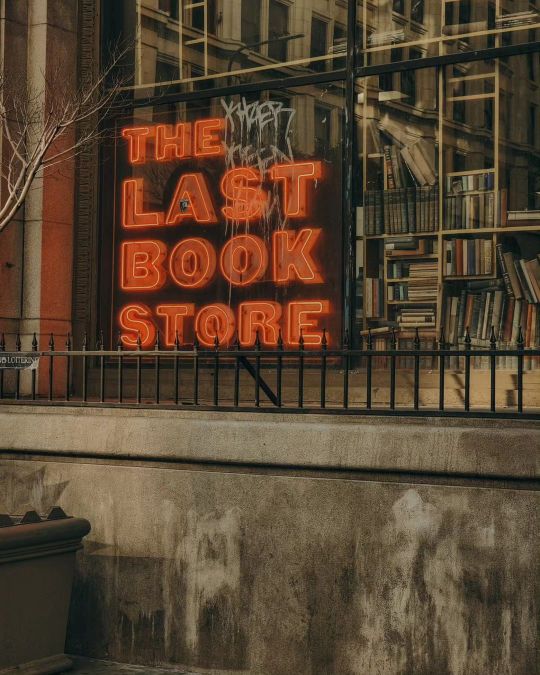




#alıntı#reading#booklover#books#culture#home lifestyle#books and libraries#books libraries#litarature#photography#writing#currently reading#ctiy#travel#landscape#vintage#history#aesthetic#i love you#architecture#trees#view#scenery#bookworm#romance quotes#edebiyat#studyblr#studyspo#tumblarians#spilled thoughts
5K notes
·
View notes
Text
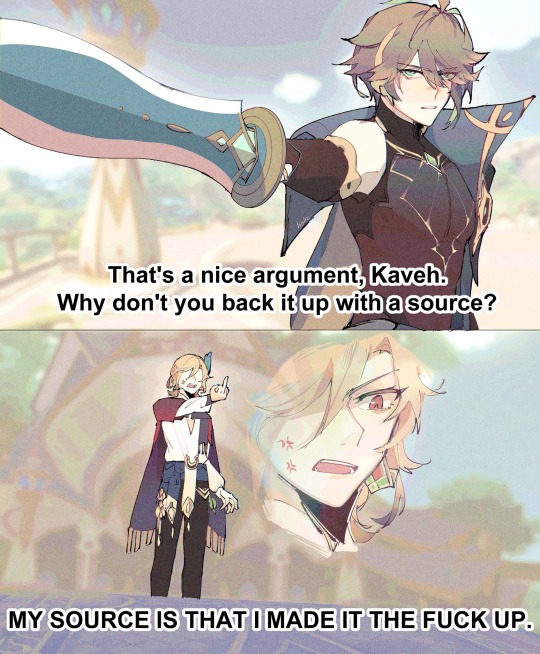
#THE GIRLS ARE FIGHTING#alhaitham’s supreme logic is nothing in the face of kaveh’s unstoppable stubbornness#there’s a reason why kaveh went into architecture instead of writing papers#kavetham#genshin impact#kaveh#alhaitham#al haitham#I FORGOT TO DRAW THE HEADPHONE CORD
43K notes
·
View notes
Text

《Rima XXIV》
Dos rojas lenguas de fuego
que, a un mismo tronco enlazadas,
se aproximan, y al besarse
forman una sola llama;
dos notas que del laúd
a un tiempo la mano arranca,
y en el espacio se encuentran
y armoniosas se abrazan;
dos olas que vienen juntas
a morir sobre una playa
y que al romper se coronan
con un penacho de plata;
dos jirones de vapor
que del lago se levantan
y al juntarse allá en el cielo
forman una nube blanca;
dos ideas que al par brotan,
dos besos que a un tiempo estallan,
dos ecos que se confunden,
eso son nuestras dos almas.
Gustavo Adolfo Bécquer
#art#culture#travel#photography#desing#books and libraries#books libraries#architecture#beauty#nature#spilled thoughts#i love you#quotes#photographers on tumblr#poetas en español#writing#poetry
8K notes
·
View notes
Text
Smart dog 🦮🐕🦺
#smart dogs#dog#dogs of tumblr#dogs#puppies#puppy#cute animals#cute#cute dog#architecture#art#writing#memes#dog memes#pet#pets#dogblr#dog blog#funny dogs#funny memes#funny#funny post#ha ha funny#ha ha ha#animals#animal#animals video#cuteness
1K notes
·
View notes
Text
Fantasy Guide to Interiors



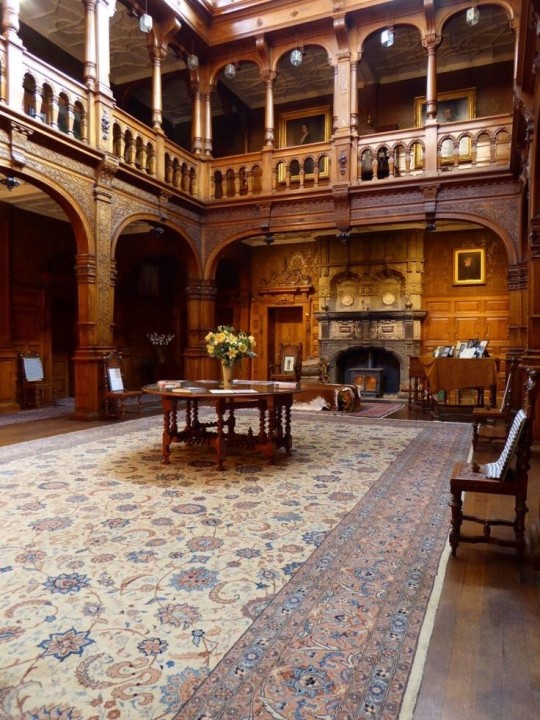
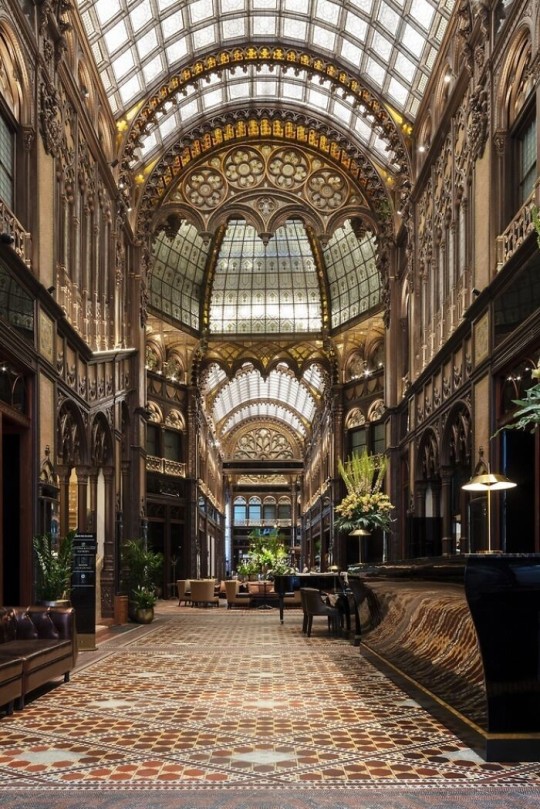
As a followup to the very popular post on architecture, I decided to add onto it by exploring the interior of each movement and the different design techniques and tastes of each era. This post at be helpful for historical fiction, fantasy or just a long read when you're bored.
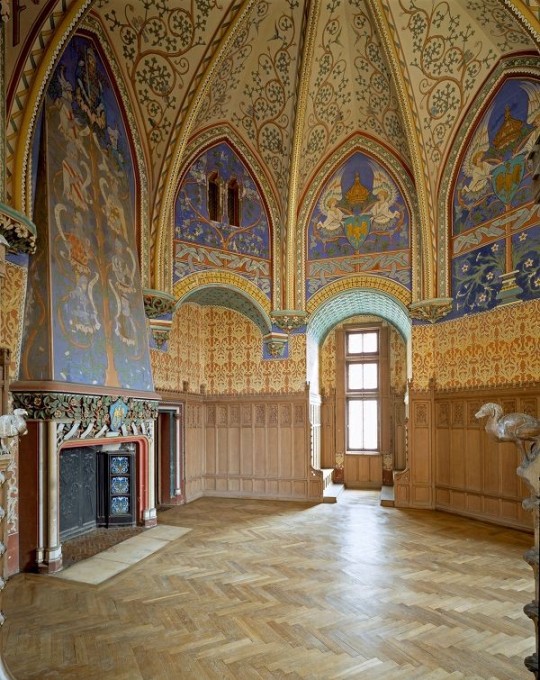


Interior Design Terms
Reeding and fluting: Fluting is a technique that consists a continuous pattern of concave grooves in a flat surface across a surface. Reeding is it's opposite.
Embossing: stamping, carving or moulding a symbol to make it stand out on a surface.
Paneling: Panels of carved wood or fabric a fixed to a wall in a continuous pattern.
Gilding: the use of gold to highlight features.
Glazed Tile: Ceramic or porcelain tiles coated with liquid coloured glass or enamel.
Column: A column is a pillar of stone or wood built to support a ceiling. We will see more of columns later on.
Bay Window: The Bay Window is a window projecting outward from a building.
Frescos: A design element of painting images upon wet plaster.
Mosaic: Mosaics are a design element that involves using pieces of coloured glass and fitted them together upon the floor or wall to form images.
Mouldings: ornate strips of carved wood along the top of a wall.
Wainscoting: paneling along the lower portion of a wall.
Chinoiserie: A European take on East Asian art. Usually seen in wallpaper.
Clerestory: A series of eye-level windows.
Sconces: A light fixture supported on a wall.
Niche: A sunken area within a wall.
Monochromatic: Focusing on a single colour within a scheme.
Ceiling rose: A moulding fashioned on the ceiling in the shape of a rose usually supporting a light fixture.
Baluster: the vertical bars of a railing.
Façade: front portion of a building
Lintel: Top of a door or window.
Portico: a covered structure over a door supported by columns
Eaves: the part of the roof overhanging from the building
Skirting: border around lower length of a wall
Ancient Greece
Houses were made of either sun-dried clay bricks or stone which were painted when they dried. Ground floors were decorated with coloured stones and tiles called Mosaics. Upper level floors were made from wood. Homes were furnished with tapestries and furniture, and in grand homes statues and grand altars would be found. Furniture was very skillfully crafted in Ancient Greece, much attention was paid to the carving and decoration of such things. Of course, Ancient Greece is ancient so I won't be going through all the movements but I will talk a little about columns.
Doric: Doric is the oldest of the orders and some argue it is the simplest. The columns of this style are set close together, without bases and carved with concave curves called flutes. The capitals (the top of the column) are plain often built with a curve at the base called an echinus and are topped by a square at the apex called an abacus. The entablature is marked by frieze of vertical channels/triglyphs. In between the channels would be detail of carved marble. The Parthenon in Athens is your best example of Doric architecture.
Ionic: The Ionic style was used for smaller buildings and the interiors. The columns had twin volutes, scroll-like designs on its capital. Between these scrolls, there was a carved curve known as an egg and in this style the entablature is much narrower and the frieze is thick with carvings. The example of Ionic Architecture is the Temple to Athena Nike at the Athens Acropolis.
Corinthian: The Corinthian style has some similarities with the Ionic order, the bases, entablature and columns almost the same but the capital is more ornate its base, column, and entablature, but its capital is far more ornate, commonly carved with depictions of acanthus leaves. The style was more slender than the others on this list, used less for bearing weight but more for decoration. Corinthian style can be found along the top levels of the Colosseum in Rome.
Tuscan: The Tuscan order shares much with the Doric order, but the columns are un-fluted and smooth. The entablature is far simpler, formed without triglyphs or guttae. The columns are capped with round capitals.
Composite: This style is mixed. It features the volutes of the Ionic order and the capitals of the Corinthian order. The volutes are larger in these columns and often more ornate. The column's capital is rather plain. for the capital, with no consistent differences to that above or below the capital.
Ancient Rome
Rome is well known for its outward architectural styles. However the Romans did know how to add that rizz to the interior. Ceilings were either vaulted or made from exploded beams that could be painted. The Romans were big into design. Moasics were a common interior sight, the use of little pieces of coloured glass or stone to create a larger image. Frescoes were used to add colour to the home, depicting mythical figures and beasts and also different textures such as stonework or brick. The Romans loved their furniture. Dining tables were low and the Romans ate on couches. Weaving was a popular pastime so there would be tapestries and wall hangings in the house. Rich households could even afford to import fine rugs from across the Empire. Glass was also a feature in Roman interior but windows were usually not paned as large panes were hard to make. Doors were usually treated with panels that were carved or in lain with bronze.
Ancient Egypt
Egypt was one of the first great civilisations, known for its immense and grand structures. Wealthy Egyptians had grand homes. The walls were painted or plastered usually with bright colours and hues. The Egyptians are cool because they mapped out their buildings in such a way to adhere to astrological movements meaning on special days if the calendar the temple or monuments were in the right place always. The columns of Egyptian where thicker, more bulbous and often had capitals shaped like bundles of papyrus reeds. Woven mats and tapestries were popular decor. Motifs from the river such as palms, papyrus and reeds were popular symbols used.
Ancient Africa
African Architecture is a very mixed bag and more structurally different and impressive than Hollywood would have you believe. Far beyond the common depictions of primitive buildings, the African nations were among the giants of their time in architecture, no style quite the same as the last but just as breathtaking.
Rwandan Architecture: The Rwandans commonly built of hardened clay with thatched roofs of dried grass or reeds. Mats of woven reeds carpeted the floors of royal abodes. These residences folded about a large public area known as a karubanda and were often so large that they became almost like a maze, connecting different chambers/huts of all kinds of uses be they residential or for other purposes.
Ashanti Architecture: The Ashanti style can be found in present day Ghana. The style incorporates walls of plaster formed of mud and designed with bright paint and buildings with a courtyard at the heart, not unlike another examples on this post. The Ashanti also formed their buildings of the favourite method of wattle and daub.
Nubian Architecture: Nubia, in modern day Ethiopia, was home to the Nubians who were one of the world's most impressive architects at the beginning of the architecture world and probably would be more talked about if it weren't for the Egyptians building monuments only up the road. The Nubians were famous for building the speos, tall tower-like spires carved of stone. The Nubians used a variety of materials and skills to build, for example wattle and daub and mudbrick. The Kingdom of Kush, the people who took over the Nubian Empire was a fan of Egyptian works even if they didn't like them very much. The Kushites began building pyramid-like structures such at the sight of Gebel Barkal
Japanese Interiors
Japenese interior design rests upon 7 principles. Kanso (簡素)- Simplicity, Fukinsei (不均整)- Asymmetry, Shizen (自然)- Natural, Shibumi (渋味) – Simple beauty, Yugen (幽玄)- subtle grace, Datsuzoku (脱俗) – freedom from habitual behaviour, Seijaku (静寂)- tranquillity.
Common features of Japanese Interior Design:
Shoji walls: these are the screens you think of when you think of the traditional Japanese homes. They are made of wooden frames, rice paper and used to partition
Tatami: Tatami mats are used within Japanese households to blanket the floors. They were made of rice straw and rush straw, laid down to cushion the floor.
Genkan: The Genkan was a sunken space between the front door and the rest of the house. This area is meant to separate the home from the outside and is where shoes are discarded before entering.
Japanese furniture: often lowest, close to the ground. These include tables and chairs but often tanked are replaced by zabuton, large cushions. Furniture is usually carved of wood in a minimalist design.
Nature: As both the Shinto and Buddhist beliefs are great influences upon architecture, there is a strong presence of nature with the architecture. Wood is used for this reason and natural light is prevalent with in the home. The orientation is meant to reflect the best view of the world.
Islamic World Interior
The Islamic world has one of the most beautiful and impressive interior design styles across the world. Colour and detail are absolute staples in the movement. Windows are usually not paned with glass but covered in ornate lattices known as jali. The jali give ventilation, light and privacy to the home. Islamic Interiors are ornate and colourful, using coloured ceramic tiles. The upper parts of walls and ceilings are usually flat decorated with arabesques (foliate ornamentation), while the lower wall areas were usually tiled. Features such as honeycombed ceilings, horseshoe arches, stalactite-fringed arches and stalactite vaults (Muqarnas) are prevalent among many famous Islamic buildings such as the Alhambra and the Blue Mosque.
Byzantine (330/395–1453 A. D)
The Byzantine Empire or Eastern Roman Empire was where eat met west, leading to a melting pot of different interior designs based on early Christian styles and Persian influences. Mosaics are probably what you think of when you think of the Byzantine Empire. Ivory was also a popular feature in the Interiors, with carved ivory or the use of it in inlay. The use of gold as a decorative feature usually by way of repoussé (decorating metals by hammering in the design from the backside of the metal). Fabrics from Persia, heavily embroidered and intricately woven along with silks from afar a field as China, would also be used to upholster furniture or be used as wall hangings. The Byzantines favoured natural light, usually from the use of copolas.
Indian Interiors
India is of course, the font of all intricate designs. India's history is sectioned into many eras but we will focus on a few to give you an idea of prevalent techniques and tastes.
The Gupta Empire (320 – 650 CE): The Gupta era was a time of stone carving. As impressive as the outside of these buildings are, the Interiors are just as amazing. Gupta era buildings featured many details such as ogee (circular or horseshoe arch), gavaksha/chandrashala (the motif centred these arches), ashlar masonry (built of squared stone blocks) with ceilings of plain, flat slabs of stone.
Delhi Sultanate (1206–1526): Another period of beautifully carved stone. The Delhi sultanate had influence from the Islamic world, with heavy uses of mosaics, brackets, intricate mouldings, columns and and hypostyle halls.
Mughal Empire (1526–1857): Stonework was also important on the Mughal Empire. Intricately carved stonework was seen in the pillars, low relief panels depicting nature images and jalis (marble screens). Stonework was also decorated in a stye known as pietra dura/parchin kari with inscriptions and geometric designs using colored stones to create images. Tilework was also popular during this period. Moasic tiles were cut and fitted together to create larger patters while cuerda seca tiles were coloured tiles outlined with black.
Chinese Interiors
Common features of Chinese Interiors
Use of Colours: Colour in Chinese Interior is usually vibrant and bold. Red and Black are are traditional colours, meant to bring luck, happiness, power, knowledge and stability to the household.
Latticework: Lattices are a staple in Chinese interiors most often seen on shutters, screens, doors of cabinets snf even traditional beds.
Lacquer: Multiple coats of lacquer are applied to furniture or cabinets (now walls) and then carved. The skill is called Diaoqi (雕漆).
Decorative Screens: Screens are used to partition off part of a room. They are usually of carved wood, pained with very intricate murals.
Shrines: Spaces were reserved on the home to honour ancestors, usually consisting of an altar where offerings could be made.
Of course, Chinese Interiors are not all the same through the different eras. While some details and techniques were interchangeable through different dynasties, usually a dynasty had a notable style or deviation. These aren't all the dynasties of course but a few interesting examples.
Song Dynasty (960–1279): The Song Dynasty is known for its stonework. Sculpture was an important part of Song Dynasty interior. It was in this period than brick and stone work became the most used material. The Song Dynasty was also known for its very intricate attention to detail, paintings, and used tiles.
Ming Dynasty(1368–1644): Ceilings were adorned with cloisons usually featuring yellow reed work. The floors would be of flagstones usually of deep tones, mostly black. The Ming Dynasty favoured richly coloured silk hangings, tapestries and furnishings. Furniture was usually carved of darker woods, arrayed in a certain way to bring peace to the dwelling.
Han Dynasty (206 BC-220 AD): Interior walls were plastered and painted to show important figures and scenes. Lacquer, though it was discovered earlier, came into greater prominence with better skill in this era.
Tang Dynasty (618–907) : The colour palette is restrained, reserved. But the Tang dynasty is not without it's beauty. Earthenware reached it's peak in this era, many homes would display fine examples as well. The Tang dynasty is famous for its upturned eaves, the ceilings supported by timber columns mounted with metal or stone bases. Glazed tiles were popular in this era, either a fixed to the roof or decorating a screen wall.
Romanesque (6th -11th century/12th)
Romanesque Architecture is a span between the end of Roman Empire to the Gothic style. Taking inspiration from the Roman and Byzantine Empires, the Romanesque period incorporates many of the styles. The most common details are carved floral and foliage symbols with the stonework of the Romanesque buildings. Cable mouldings or twisted rope-like carvings would have framed doorways. As per the name, Romansque Interiors relied heavily on its love and admiration for Rome. The Romanesque style uses geometric shapes as statements using curves, circles snf arches. The colours would be clean and warm, focusing on minimal ornamentation.
Gothic Architecture (12th Century - 16th Century)
The Gothic style is what you think of when you think of old European cathedrals and probably one of the beautiful of the styles on this list and one of most recognisable. The Gothic style is a dramatic, opposing sight and one of the easiest to describe. Decoration in this era became more ornate, stonework began to sport carving and modelling in a way it did not before. The ceilings moved away from barreled vaults to quadripartite and sexpartite vaulting. Columns slimmed as other supportive structures were invented. Intricate stained glass windows began their popularity here. In Gothic structures, everything is very symmetrical and even.
Mediaeval (500 AD to 1500)
Interiors of mediaeval homes are not quite as drab as Hollywood likes to make out. Building materials may be hidden by plaster in rich homes, sometimes even painted. Floors were either dirt strewn with rushes or flagstones in larger homes. Stonework was popular, especially around fireplaces. Grand homes would be decorated with intricate woodwork, carved heraldic beasts and wall hangings of fine fabrics.
Renaissance (late 1300s-1600s)
The Renaissance was a period of great artistry and splendor. The revival of old styles injected symmetry and colour into the homes. Frescoes were back. Painted mouldings adorned the ceilings and walls. Furniture became more ornate, fixed with luxurious upholstery and fine carvings. Caryatids (pillars in the shape of women), grotesques, Roman and Greek images were used to spruce up the place. Floors began to become more intricate, with coloured stone and marble. Modelled stucco, sgraffiti arabesques (made by cutting lines through a layer of plaster or stucco to reveal an underlayer), and fine wall painting were used in brilliant combinations in the early part of the 16th century.
Tudor Interior (1485-1603)
The Tudor period is a starkly unique style within England and very recognisable. Windows were fixed with lattice work, usually casement. Stained glass was also in in this period, usually depicting figures and heraldic beasts. Rooms would be panelled with wood or plastered. Walls would be adorned with tapestries or embroidered hangings. Windows and furniture would be furnished with fine fabrics such as brocade. Floors would typically be of wood, sometimes strewn with rush matting mixed with fresh herbs and flowers to freshen the room.
Baroque (1600 to 1750)
The Baroque period was a time for splendor and for splashing the cash. The interior of a baroque room was usually intricate, usually of a light palette, featuring a very high ceiling heavy with detail. Furniture would choke the room, ornately carved and stitched with very high quality fabrics. The rooms would be full of art not limited to just paintings but also sculptures of marble or bronze, large intricate mirrors, moldings along the walls which may be heavily gilded, chandeliers and detailed paneling.
Victorian (1837-1901)
We think of the interiors of Victorian homes as dowdy and dark but that isn't true. The Victorians favoured tapestries, intricate rugs, decorated wallpaper, exquisitely furniture, and surprisingly, bright colour. Dyes were more widely available to people of all stations and the Victorians did not want for colour. Patterns and details were usually nature inspired, usually floral or vines. Walls could also be painted to mimic a building material such as wood or marble and most likely painted in rich tones. The Victorians were suckers for furniture, preferring them grandly carved with fine fabric usually embroidered or buttoned. And they did not believe in minimalism. If you could fit another piece of furniture in a room, it was going in there. Floors were almost eclusively wood laid with the previously mentioned rugs. But the Victorians did enjoy tiled floors but restricted them to entrances. The Victorians were quite in touch with their green thumbs so expect a lot of flowers and greenery inside. with various elaborately decorated patterned rugs. And remember, the Victorians loved to display as much wealth as they could. Every shelf, cabinet, case and ledge would be chocked full of ornaments and antiques.
Edwardian/The Gilded Age/Belle Epoque (1880s-1914)
This period (I've lumped them together for simplicity) began to move away from the deep tones and ornate patterns of the Victorian period. Colour became more neutral. Nature still had a place in design. Stained glass began to become popular, especially on lampshades and light fixtures. Embossing started to gain popularity and tile work began to expand from the entrance halls to other parts of the house. Furniture began to move away from dark wood, some families favouring breathable woods like wicker. The rooms would be less cluttered.
Art Deco (1920s-1930s)
The 1920s was a time of buzz and change. Gone were the refined tastes of the pre-war era and now the wow factor was in. Walls were smoother, buildings were sharper and more jagged, doorways and windows were decorated with reeding and fluting. Pastels were in, as was the heavy use of black and white, along with gold. Mirrors and glass were in, injecting light into rooms. Gold, silver, steel and chrome were used in furnishings and decor. Geometric shapes were a favourite design choice. Again, high quality and bold fabrics were used such as animal skins or colourful velvet. It was all a rejection of the Art Noveau movement, away from nature focusing on the man made.
Modernism (1930 - 1965)
Modernism came after the Art Deco movement. Fuss and feathers were out the door and now, practicality was in. Materials used are shown as they are, wood is not painted, metal is not coated. Bright colours were acceptable but neutral palettes were favoured. Interiors were open and favoured large windows. Furniture was practical, for use rather than the ornamentation, featuring plain details of any and geometric shapes. Away from Art Deco, everything is straight, linear and streamlined.
#This took forever#I'm very tired#But enjoy#I covered as much as I could find#Fantasy Guide to interiors#interior design#Architecture#writings#writing resources#Writing reference#Writing advice#Writer's research#writing research#Writer's rescources#Writing help#Mediaeval#Renaissance#Chinese Interiors#Japanese Interiors#Indian interiors#writing#writeblr#writing reference#writing advice#writer#spilled words#writers
3K notes
·
View notes
Text
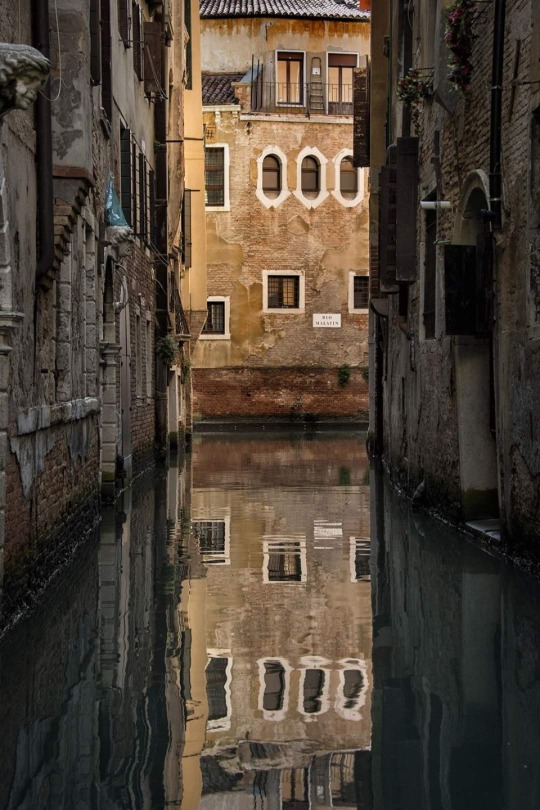
have the courage to transform yourself, my darling, to what you desire.
// clarice lispector
#photography#ph#venice#venezia#italy#travel photography#italia#art#q#quote#words#writing#europe#travel#yourself#inspiration#artist#architecture#clarice lispector#letters#life#lit#view
1K notes
·
View notes
Text

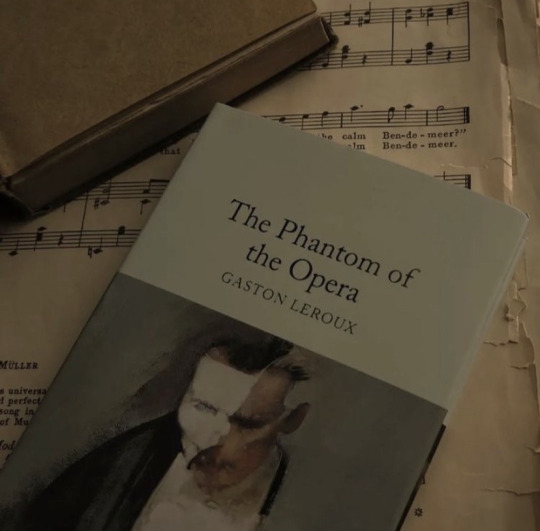


#⋆.ೃ࿔*:・#light academia#aesthetic#aes#moodboard#book aesthetic#books#academia#architecture#chaotic academia#cozycore#warmcore#moon#sky#classic academia#dark academia#classic literature#romanticism#romantic academia#writing
7K notes
·
View notes
Text

AND IF THAT'S ALL THAT I'M GONNA BE / WON'T YOU BREAK THE CHAIN WITH ME?
#asoiaf#daenerys targaryen#favorite part as always was the outfit but i also had fun writing all the titles out 😭#new appreciation gained for islamic architecture bc designing that frame sucked ass. You can see i kind of failed on the sides.#my art#daenerys#daenerys stormborn
599 notes
·
View notes
Text
Philophobia
Word Count: 5,271
Warnings: Shipping, inappropriate/crude humor, paranormal activity, suspense/mild horror, descriptive kissing, mild language
Summary: For architecture major and paranormal skeptic Grian, his friends’ after-hours ghost hunting group was just an excuse to spend time with his crush, Scar, without having to actually ask him out. But one fateful night, he finds there just might be things in this world that are scarier than emotional vulnerability… even if only by a very slim margin.
A/N: Did someone ask for a Phasmophobia-inspired Scarian au? Oh yeah, my friend @lunarcrown did! Inspired by the art she made here.
So this is kind of a modern-day college au (not set within the fictional universe of Minecraft), howEVER there are some fantasy aspects in that non-human species (like mob hybrids/monsters) still exist cuz they’re fun and I’m not giving anyone a normal modern name cuz that’s too weird. This is only Phasmophobia-inspired in that GIGS have a ghost-hunting group that functions the same way, but rarely find any conclusive evidence, and don’t have unlimited lives cuz they aren’t playing a game. With that out of the way, hope y’all enjoy, please reblog/comment if u do! - Aqua
~*~
Philophobia
~*~
“I think this is gonna be the one, guys,” Impulse says, turning their van into the driveway.
The suspension creaks as they roll over gravel, rattling the frame in a way that hums through Grian’s hollow bones. His arm is cold where it presses against the window; it’s almost sunset and Impulse has yet to get the van’s heater fixed despite his promises. Stupid demon blood keeping him warm while Grian shivers in the stupid custom pleather jumpsuit that Scar insisted they had made, for their stupid ‘brand’ as a stupid ghost-hunting group. Great, his stupid zipper’s come down again- he stubbornly zips it back up because unlike Scar, he doesn’t like constantly having his bare chest out on display.
Of course, he hasn’t got as much to show off as Scar, who must be getting up at 3 am every morning to work out in order to maintain all that muscle. No wonder Scar prefers to keep his zipper down to his belly button, and doesn’t seem to have ever met a shirt that fits him properly.
… Not that Grian’s ever paid much attention to that sort of thing.
Grian gives an exasperated sigh. “You’ve been saying that about every case we’ve had for three years!”
“No, no, I really mean it!” Impulse insists. “I feel it in my bones.”
“Yeah,” Scar agrees, leaning forward so his shoulder brushes against Grian’s, “you know Impulse bones good!”
The earnest nature of his statement- and the unexpected physical contact- makes Grian flush. “Scar!” he shrieks, swatting Scar’s shoulder.
“What?” Scar defends. “What, he- he’s got big and strong bones, wonderful bones…”
He acts as if he’s got no idea he said something that could be taken the wrong way. And if it weren’t for the upturned corners of his mouth and the barely-restrained laugh in his voice, Grian might actually believe him.
“Dude,” Skizz chuckles from the front seat, “shut up, that’s awesome.”
Impulse sighs. “Anyway,” he says pointedly, “the place recently had a change in ownership. Previous owner passed away-”
“From murder?” Scar gasps.
Another sigh. “No, from liver failure.”
Grian snorts. “From all the drinking he did to forget about the ghostly hauntings?” he presses, exchanging a cheeky grin with Scar.
“No,” Impulse says, with the patience of a saint, “just normal old-age organ failure. The guy was ancient, and some kinda recluse. House had been in his family since it was built, but uh, he had no living relatives, no will when he died. So the bank took ownership and it’s been sitting off-market for like, fifteen years, til some hot-shot investor thought he could flip it-”
“Ughh,” Grian groans, tipping his head back against the seat. “Investors are the worst-”
“I know, I know,” Impulse soothes, “but um, he’d barely begun when things started happening. Contractors reported it day one, then the owner experienced an event himself and called us. So it’s basically still untouched.”
They haven’t even reached the end of the driveway yet, passing by seemingly endless rows of tall, gnarled pines. Admittedly, Grian’s curiosity is piqued. When he agreed to join this stupid ghost hunting group three years ago, he didn’t do so in the hopes of actually discovering any real paranormal activity. The whole idea is laughable. Ghost hunting is a pseudoscience, at best. Just a bunch of idiots scaring themselves silly in an empty house- and now they’re the idiots! Even their name is stupid: Ghost Investigation Group Services, or GIGS, embroidered on their ill-fitting pleather jumpsuits.
But despite his outright skepticism and dislike for pulling late nights in his already extremely limited free time, Grian’s got one very good reason for agreeing to join.
And his name is Scar.
Grian spent half a semester pining away at the fellow architecture major from across the lecture halls of their many shared classes. Charismatic and easy on the eyes, it was inevitable that Grian would develop a bit of a crush. But as they spent more time together during class projects and conversations in the hallway, he found out just how kind-hearted and passionate Scar was, and how easy he was to talk to, and how strong his arms looked in long-sleeved shirts…
… Yeah, ‘crush’ perhaps isn’t the right word.
So when Impulse- the engineering major who Grian was partnered with for physics lab- got the brilliant idea to start a ghost-hunting group with his best friend and roommate Skizz, and Scar expressed interest in joining, Grian made a split-second decision in a moment of weakness. He maintained his skepticism, claiming that he wanted to tag along just to prove how silly the whole idea was. Impulse was fine with it, while Scar said Grian had to wear the same uniform as them, and the rest was history.
(To be fair, that was before Grian knew it’d be a pleather jumpsuit.)
So here they are now nearly three years later, rumbling down a long gravel road in the dark and cold, up late on a Saturday night even though he still isn’t finished with his condominium model that’s due at 8 am on Monday and he’s fresh out of popsicle sticks. Moments like these almost make Grian wish he could just ask a guy out like a normal person, so they could spend time together without chasing pretend ghosts around dusty houses all night.
But that’d require him to talk about his feelings. Ugh, he’d rather let the ghosts get him.
“Alright.” Impulse slows the van to a halt. The doors unlock with a heavy clunk. “What do you guys think?”
Grian isn’t expecting much when he glances out the window. But the sight that greets him immediately prompts a hasty exit from the vehicle, scarcely noticing the sudden chill, his jaw dropping open in awe.
It’s a Victorian. Not a house that someone has mistakenly called ‘Victorian’ just because it looks old. A genuine, honest-to-goodness, Queen Anne’s style two-story Victorian manor with an asymmetrical facade and a rounded corner tower and a generous wrap-around porch, silhouetted against the fading light of the evening sky.
Grian reaches for his flashlight. Sweeping over the exterior, his breath catches. Knots of ivy creep up the walls, and there are a few places where the intricate wood trim has been lost to previous repairs and weather damage. A couple of the windows are bricked up. Most of the paint is faded and peeling. But overall? It’s beautiful.
“Oh man,” Grian murmurs, pushing his glasses back up, “look at the shape of it... look at the dormers!”
A second beam of light joins in; Scar’s emerged from the van. “Lots of character,” he says, sounding similarly entranced. “And still in great condition! Oh, it’s beautiful. It’s enough to make a man cry.”
Impulse hops out of the driver’s seat, chuckling. “I knew you two would like it. It’s an ‘85.”
Grian gives an appreciative whistle. “Look, I still don’t think we’re gonna find anythin’,” he says with a sideways look at Scar, “but I gotta tell ya… if- if I were a ghost… I think I’d haunt a proper house like this. Not those builder-grade boxes in the suburbs.”
“Right?” Impulse says, his forked tail flicking through the air. “That’s what I’m sayin’... I uh, I think this place has real potential.”
Skizz, who’s come around the van to stand with them, nods thoughtfully. “Definitely somethin’ special ‘bout it, that’s for true,” he says, exchanging a look with Impulse. Then he claps his hands together. “Alright gentlemen, let’s get movin’!”
Impulse and Skizz turn towards the van, heading to open the back.
Grian stares after them, squinting suspiciously. That wasn’t just any look. That was a Look. A Look that he knows all too well. They had that same Look on their faces at last year’s frat mixer, when they rigged the speakers at the Heta Kappa house to play ‘Margaritaville’ every time someone flushed a toilet.
It means that they’re Up To Something.
… Grian’s sure he’ll find out sooner or later.
“Well, Grian,” Scar says, hands on his hips as he surveys the property, “if it’s any connotation, at least we’ll get to study some real architecture tonight.”
Grian gives him a bemused look. “Consolation?”
Scar blinks. “Cono- what, what’d I say? Con- coronation?”
“Don’t worry ‘bout it, ey,” Grian chuckles, patting him on the shoulder. “Let’s go.”
~*~
“Check it out, dude,” Skizz calls excitedly, “temp’s dropping in here! Five degrees colder than the rest of the house!”
Grian makes a noncommittal noise. “It’s an east-facing room and the sun’s only just set, of course it’s colder than the rest of the house,” he says, idly passing his UV glow stick over an armchair. No prints, of course. “I doubt they’ve updated the insulation anytime within the last two decades.”
“And hey, look,” Impulse chimes in from the corner, “I’ve got EMF 1.3!”
Grian doesn’t even look up. “There’s an exposed outlet in here and I’ll bet the wiring’s older than I am. And in any case, it’s still below the recommended threshold.” Ew, okay, now that’s a suspicious UV stain on the floor, but not of the supernatural kind…
“Oh, it’s definitely not up to code,” Impulse agrees. He waves his EMF reader around a bit, making the pitch warble. “But I dunno, I think this must be the ghost’s favorite room. Might not be here right now, but I’m getting some real vibes…”
Grian rolls his eyes. “Sure…”
Twenty minutes in, and despite the house’s hauntingly elegant construction, it’s been the same old story. The house is empty and quiet, as abandoned houses tend to be. Quite sparse, as most of the furnishings probably went to auction. The furniture that’s left is covered with tarps and every surface is coated with a fine layer of dust. He can smell mold somewhere in the floorboards and there’s apparent water damage in the ceiling.
The only renovation attempted thus far was the removal of some cheap linoleum tiles that were laid in the kitchen at some point- a renovation Grian can heartily agree with, there’s some absolutely gorgeous hardwood underneath- but they didn’t get far. The removed tiles are still sitting about in a haphazard pile, hammer and chisel abandoned on the floor beside them. Frantic footsteps smeared in the dust and powder paint the scene of a terrified contractor fleeing for their life from the reported ‘ghostly hauntings’.
In any case, they haven’t heard any activity from the spirit box, nothing unusual has stood out on UV, and the salt Impulse laid out is still undisturbed. Surprise, surprise. Grian’s spent most of his time admiring the elaborate wooden trims lining every wall, scuffed as they are. What he wouldn’t give to properly restore this place…
“Hey, Dipple Dop?” Skizz calls suddenly. “Your radio working okay?”
Impulse gives him a curious look. “Huh? What, is there-” He pauses, glancing down at his radio. “Oh. Oh, yeah. Yeah, actually, mine’s on the fritz, must be overdue a battery change.”
“Oh?” Grian tilts his head innocently. “You don’t think it’s a ghoooost?”
Impulse purses his lips. “I don’t think everything is a ghost,” he says mildly. He clips the radio onto his belt, turning to the door. “I’ve got extras in the van, hang on…��
“I’ll go, too,” Skizz says quickly, slinging an arm and his wing around Impulse’s shoulders. “Buddy system! You know what, I- I’m tellin’ you, you never split up when hunting ghosts. That’s how they get you, dude.”
Oh. Oh, no.
Grian gives them a warning Look.
They give him a cheeky Look back.
“Yup, yeah, that’s true,” Impulse says with obvious feigned sincerity, steering Skizz out of the room. “So uh, you two keep at it, okay, and we’ll be right back…”
“Oh, okay!” Scar says cheerfully, busy setting up the tripod over in the corner and completely oblivious to their scheme. “Have a great time not getting murdered!”
Grian opens his mouth to protest, but Impulse and Skizz are already gone out the front door. Leaving him and Scar completely alone. Totally by coincidence, surely. Oh, he knew his drunken confession to Impulse at the school’s annual bar crawl fundraiser night would come back to bite him eventually.
It’s almost insulting, in a way. Like they think the only reason Grian hasn’t made a move is because he hasn’t had ample alone time with Scar. Like he needed them to give him an opportunity. But if he’d wanted to confess to Scar, he already would have. He’d have had it well done by now. They could give him a little credit.
See, the thing is, he’s thought about it. Plenty of times, in fact. But the issue he keeps coming back to is that if he tells Scar about his crush on him, then Scar will know about it. There’ll be no going back at that point. And if Scar doesn’t feel the same way- well, Grian can kiss their friendship goodbye. So yeah, no, he doesn’t think he’ll be making any dramatic love confessions tonight, strangely enough.
The risk of an awkward silence developing is astronomical, so Grian clears his throat. “Man… isn’t this place somethin’,” he says, then immediately fights the urge to cringe.
Scar, luckily, gives an emphatic nod. “It is, it truly is amazing.” He straightens up, dusting his hands off as he turns to Grian. “You know who’d really love this place, is Gem?”
“Oh, yeah, for sure,” Grian agrees. He busies himself with the UV, so he’s not just standing around. “We should take some pictures for her.”
“Oh, good idea!” Giving the tripod a final once-over, Scar wanders over to Grian. “So, any fingering goin’ on, yet?”
Grian nearly drops his glow stick. “Sorry- any what?!” he screeches, whirling around on Scar.
“You know, ghost fingers!” Scar says, perfectly innocent. He holds his hands up, wiggling his fingers in demonstration. “On the- on the glowy light?”
Grian takes a deep breath, face burning. “Oh Scar, buddy, you gotta think through your words better before you say them, alright?”
“Whaaat?” Scar pretends like he doesn’t know. “What, I’m just- you’ve got the stick, you know, little glow stick for when the ghost touches, uh-”
“Nevermind,” Grian groans. “Anyways, no, I haven’t found any ghostly handprints and I never will, because ghosts aren’t real.”
Scar folds his arms. “Well, hey, maybe the ghost is just polite! You know, he- maybe he’s just minding his business, not touching anything or- or anyone. Just because we don’t get anything on UV doesn’t mean ghosts aren’t real, I’ll have you know.”
Grian sees the challenge for what it is. “Alright…” He reaches into his pocket and pulls out his spirit box. Holding the transponder to his lips, he belts out, “Where ahhre yewww?” in his best imitation of an over-exaggerated pop-punk accent. If Impulse and Skizz are eavesdropping through their radios, he hopes he gave them a start.
Scar laughs. “Oh man, been a while since I heard that one! You-”
I’m close.
Grian jumps so badly he nearly drops the box, his wings puffing out involuntarily. “What?! Wha- who said that?” he demands, spinning around.
Scar blinks at him. “What? Did you hear something through the box?”
“I- I dunno?” Grian says uncertainly. The box seems to be working as normal; when he holds the receiver down, there’s a faint hiss of static, and the bulb remains white. No further noises come from the speaker.
After a couple seconds of tense listening, Grian feels silly. Way to play it cool. He switches the box off with an exasperated sigh. “No, of course I didn’t hear anything through the box. Like I said, ghosts aren’t real.”
Scar hums noncommittally. “Oh, Grian... you know, there are some things in the world that can’t be explained.”
Grian snorts. “Oh, yeah? Well, I- I got a few explanations for ya.” He counts on his fingers. “It could’ve been this old house creaking in the wind, or an electrical surge causing feedback through the transponder, or- or, not to mention, Impulse and Skizz pranking us through the radio?”
Scar snickers. “That does sound like something they’d do, I’ll give you that.”
“Yeah.” Grian slips the box back into his pocket. “And y’know, being in a creepy abandoned house, after dark, out in the middle’a nowhere... it’s easy to think you’re hearin’ things.”
Scar rolls his eyes, but his expression is fond. “I know, I know, so you’ve told me. But one of these days, mister, you’re gonna eat your words.”
“Right,” Grian drawls. “I’m so scared…”
The front door slams shut.
That makes Grian pause. They always leave the front door open while out on a job. It saves time when they have to go back and forth from the van, and saves battery life on their radios when they can just shout to each other through the open doorway. Obviously this job is a little different, because Impulse and Skizz have clearly got it in their heads to try and get him and Scar together, but he wouldn’t think they’d go so far as to-
The lights suddenly flicker and go out. But in the split-second before they do, Grian sees a shadowy figure silhouetted against the door.
Pure instinct takes over. Grian spins on his heel, grabs Scar by the arm, and absolutely flies down the stairs to the basement. He knows they’ve disturbed one or two piles of salt but right now, he can’t bring himself to care. His wings are bumping against the walls and he’s certainly never tried carrying someone as big as Scar before but he doesn’t stop, doesn’t even process the ache of it rattling through his body. He bursts into the basement, feathers flying, and careens towards the back of the room, around a tall shelving unit, and into the corner.
There’s a heap of boxes stacked up in this corner; Grian unceremoniously shoves Scar over top of them, dropping him in the narrow space between the boxes and the wall. He’s wedged in as far as he can himself, laying across the boxes, his double pair of wings preventing him from squeezing in beside Scar. He’s still got the UV light clenched in his fist, he realizes belatedly- he braces his forearms against the wall to try and cover it, fanning his wings out behind him to block it out from the rest of the room. Glancing back over his shoulder, he tries to gauge how much light is getting through when a noise makes him freeze.
Footsteps.
They’re soft and light- certainly not the heavy boots of Impulse or Skizz. No, they sound almost barefoot. And as they gently tap down the stairs, the sound of giggling fills the air. It’s a feminine voice. Young, like a child. Like a little ghostie girl is prancing down the stairs to murder them.
Grian thinks he might pass out. Can ghosts actually kill people? How would they do it if they’re incorporeal? He’s never considered the question before, he never thought he’d have to because it’s ridiculous, ghosts aren’t real, of course they can’t kill people-
The footsteps stop.
Grian isn’t sure if he’s still breathing. He doesn’t dare move. A chill runs up his spine, making every single feather stand on end. He can almost hear the high-pitched violins that would be playing right now if this were a horror movie; the cheesy, overdrawn kind of horror movies that are always playing at the drive-in that the four of them watch while piled into the back of the van in a tangle of limbs and spilled popcorn and oh god he’s spiraling now because he’s about to be killed by a ghost-
Bye-bye!
The chill recedes. Somewhere in his peripheral vision, he sees the faint glow of light from upstairs return.
It’s over.
Grian’s mind is spinning. What was that? What was that? It seems impossible, it doesn’t even feel real to be in this situation right now but he is, there was a ghost, there was a ghost. It feels insane to even think it. But the residual adrenaline coursing through his body reminds him it was very real, he just encountered a ghost.
A ghost! Oh, after three years of very loudly decrying the entire concept as rubbish. He can’t believe it. He really can’t believe it, this is the absolute last thing he expected to happen tonight. Ghosts are real. Ghosts are really, really, real. He doesn’t know what to do, who would ever believe him? Is this how the others have been feeling this whole time? God, he can’t believe this-
“G...?” Scar’s voice pipes up hesitantly. “What... what are we doing?”
Oh, right. Grian glances down at Scar- and his heart jolts. He’d been so focused on getting away from the ghost, he’d acted without thinking, so only now does he realize the... predicament he’s put them in.
Scar’s slumped against the floor beneath him, head tucked just below Grian’s arms. His long legs are still draped over the box that Grian’s laying across, resting on either side of his waist. And due to the odd posture Grian’s in, his chest has been thrust rather close to Scar’s face, lit by the soft purple glow of the UV.
This is probably the closest Grian has ever been to sitting in Scar’s lap.
Grian’s not proud of the yelp that escapes him. “Sorry, sorry!” His wings flail as he struggles to push himself off of the wall, stumbling back onto his feet. It’s clumsy and uncoordinated and he nearly falls backwards, his heart pounding.
Scar manages a laugh, easing himself up off the floor. “No, no, it’s okay, I- I just... what- why’d you bring us down here?” he asks, dusting off his jumpsuit.
Grian catches his breath. “Wait, you... didn’t hear the creepy ghost on its way to kill us?” he asks, frowning.
Scar‘s eyes widen. “What? There was a ghost?”
No way.
“Are you-!” Grian throws his arms up. “Honestly, I- I know avians have better hearing than most but that’s insane. She was laughing! Laughing and skipping down the blumin’ steps! And you didn’t hear any of it?”
“No…?” Scar shrugs helplessly. “I’m sorry, okay! I- I don’t know, I was- a lot was happening, you- you’re grabbin’ me, pulling me down the stairs and into this little corner, I didn’t know what was going on! I didn’t know, I- I was all disconbodulated- disco- bobo, bobumated? I was a little distracted, okay. Jeeze, give a man a break…”
“Distracted?” Grian repeats incredulously. “You’re the one who actually believes in ghosts, here, how could you get distracted? What do you…”
He trails off. Scar is very clearly fighting to avoid looking at Grian, but for the briefest moment, his eyes dart down to Grian’s chest. Suddenly confused, Grian follows his gaze, and-
Oh, for goodness sakes. At some point during his frantic flight, the stupid zipper on his stupid jumpsuit came down again, exposing a frankly scandalous amount of skin. Not Scar-level of scandalous, but pretty close.
Grian immediately feels himself turn red. “Oh. Uh- right,” he hastily pulls the zipper back up, “sorry ‘bout that…”
Wait. Wait just a second.
Scar was distracted from a literal ghost hunt going on... because Grian’s bare chest was showing? Does that... does that mean he liked it?
Scar’s avoiding his gaze again. His cheeks are tinted pink.
“Scar...?” Grian ventures carefully. “Were you... lookin’ at my chest?”
Scar’s cheeks darken. “Ah, I- I- don’t- I mean, why would you- I didn’t mean to, it’s just...” He fumbles for the words. “What- what am I- hey, your pecs were basically in my face! I wasn’t trying to look, I- I just-”
“Scar,” Grian says, keeping his voice light and teasing, “did ya… did you like what you saw?”
Scar splutters for a moment. “Well, sure, Grian,” he tries to laugh it off, “I mean, anyone- anyone with eyes can see you’re uh, you know, you’re- you’re pretty attractive. I- I’m secure enough to say it, I don’t care, it’s- sure, of course, you’re very muscular! You’re a- you’re a muscular man, it’s just not always obvious with the sweaters you wear. Or- sorry, you call them jumpers in Britain land, right, they’re jumpers-”
“You been checkin’ me out, Scar?” Grian asks, caught somewhere between playfulness and utter disbelief.
“Uh...” Scar rubs the back of his neck. He exhales slowly, clearly debating with himself. “I... maybe? What... what would you say... if that were the case?”
Grian swallows. His heart is absolutely racing now, and he’s broken into a cold sweat that’s definitely not supernatural in origin. The air between them feels fragile; he’s acutely aware that a single word from him could swiftly plunge them back into the realm of safe familiarity, of casual light-hearted teasing between friends. Scar’s always said things that bordered on the flirtatious, and Grian can hide behind the plausible deniability of teasing. This entire interaction doesn’t have to mean anything. It can be easily moved past and forgotten.
And yet, strangely enough… Grian doesn’t want it to. Maybe it’s the post-haunting adrenaline or the fact that he could’ve died tonight, but all of a sudden, he feels like taking a chance. Like he could finally say what he’s wanted to say for the last three years. He managed to hold his own against a blumin’ ghost, for goodness sakes- he should be able to face his own feelings head on.
He takes a breath. “I’d say that’s a relief… ‘cause I’ve been checkin’ you out since day one of first year.”
Scar stares at him for a long moment. His expression is utterly unreadable. The silence draws on long enough that Grian feels a spike of panic, worried that maybe he’s mishandled the situation-
“... oh my god,” Scar says finally. “Really?”
It sounds like the good kind of surprise. Grian offers a shy smile. “Yeah, yeah,” he admits. “I- Scar, I know I’m real good at playin’ these things close to the vest, but uh, I- I’ve had a massive crush on you since... basically since the day we met.”
“Huh.” Scar blinks. “You’re serious. You- you’re not pranking me right now?”
That startles a laugh out of Grian. “No! Scar, I don’t- we just survived being hunted by a ghost, I’m not pranking you!”
“Well, that’s- that’s amazing!” A grin spreads across Scar’s face- and man, oh man, does he have just the most wonderful smile. “Oh my gosh, G, I don’t- you don’t even know how long I’ve been waiting for this.”
The relief is almost overwhelming. “Yeah, me too!” Grian laughs, half-dazed and half-giddy, running a hand through his hair. “I- I even- look, the whole reason I even joined this group was as an excuse to hang out with you!”
Scar’s mouth falls open. “No way! That’s- that’s the whole reason I joined in the first place, too!”
Now it’s Grian’s turn to gawk. “Are you joking?”
“I’m not!” Scar insists, “I swear, I’m not- Impulse said he wanted to start the group and maybe we’d all join and get to hang out and I thought ‘hey, ghosts are cool and Grian is cool’ so I just-”
“Oh, I can’t believe this…” Grian groans, hiding his burning face in his hands. “We really are idiots, we’ve wasted nearly three years…”
Scar’s hands close around Grian’s wrists, lightly pulling them down from his face. “Well, I guess we’ll just have to make up for lost time,” he says smoothly, leaning in.
Corny, but Grian will allow it. He closes the gap, tilting his head up to meet Scar’s lips.
In that moment, everything else fades away. All the nervousness, all the second-guessing, even the bombshell discovery of the existence of ghosts- there could be one standing in front of them right now and Grian wouldn’t care. The way Scar gathers Grian in his arms, hands gently roving through his feathers- it’s bliss. It’s perfect.
Scar kisses him strong and purposefully, with no trace of carelessness or haste. He doesn’t rush. There’s intent written into every single movement, jaw working to deepen the kiss. Grian curls against him, hands splayed across Scar’s chest. He can feel Scar’s heart pounding through his flushed skin, and it’s wildly exciting- to think Scar is just as breathless as he is.
Growing bold, Grian dares to slip his tongue into Scar’s mouth, and the noise he makes- part surprise, part delight- sends pure electricity fizzling up his spine. His mind is starting to drift away from him, lost in the sensation of weightlessness, of floating, that almost makes him feel like he’s gone completely incorporeal- like his own spirit has become untethered from the mortal coil.
Then Skizz’s voice comes down the stairs.
“G-Sharp! Scarface! You down here? We just saw a freaking ghost on the cams, and- oh my god!”
Grian breaks away from Scar, but not quick enough. He turns to see Skizz and Impulse standing at the bottom of the stairs, expressions shocked. And then, as if they’d rehearsed it, they both break into massive shit-eating grins and spin around to high-five each other.
“Woo!” Impulse cheers. “We got ‘em! Ladies and gentlemen, we finally got them.”
“Yeah, baby!” Skizz pumps his fist in the air. “Oh, I love it!”
“Oh, would you two stop it?” Grian huffs, but he’s not really cross. Hard to be cross when he’s on cloud nine. “The ghost did most of the work, alright?”
“That’s right,” Scar sniffs, winding an arm around Grian’s waist. “You know, I- I’m startin’ to think you all were in cahoots! Cahoots, I say!”
“Dude, if only,” Skizz laughs, walking over to clap them on the shoulders. “Could not have planned it better, that’s amazing. Well done, gentlemen!”
“Yeah, it’s about time!” Impulse adds, crossing his arms. “I was starting to think we’d graduate before either of you fessed up, I- I had to take drastic measures…”
“Impulse,” Grian says warningly, “if you’re about to tell me you started this whole paranormal investigation group just as a way to push me and Scar into confronting our feelings, I swear-”
“No, no,” Impulse assures him, chuckling. “I really do like the ghost-hunting deal, don’t worry. But uh, we did deliberately ditch you guys in the hopes that something would happen.”
Scar waggles his eyebrows. “Oh, things happened, alright.”
“Scar!” Grian swats at him, but he’s laughing and it feels good. It feels right. After all this time spent worrying about worst-case scenarios, about denying his feelings for the sake of maintaining the comfortable mundanity of his comfortable life, it turns out the scariest part was the fear itself.
The irony doesn’t escape his notice. A bit on the nose, if he’s honest.
“But in even bigger news,” Impulse graciously continues, “you saw the ghost? And you believed it? You, Mr. Non-Believer in all things ghostly?”
Grian sighs. “Yeah, yeah, I know…”
“This is incredible!” Skizz claps his hands together. “Okay, okay, we gotta go cleanse the area and I wanna hear everything, got it? Don’t leave a single detail out!”
Grian slips his hand into Scar’s as they follow Impulse and Skizz back up the stairs. “Yeah, alright,” he relents. He supposes he’s due for a lot of ‘I told you so’s’. But really, it’s a small price to pay for the life-altering knowledge that ghosts are real… and for finally finding the courage to believe in something extraordinary.
Scar hums. “Wait, details about the ghost or about the kissing?”
“Scar!”
~*~
#hermitcraft#hermitshipping#scarian#my writing#listen i am only a casual phasmo enjoyer and idk anything about architecture school pls don't come for me abt any inaccuracies#just here for a good gay spooky time#wanted to see if i'd be any good at writing commissions (ie. solely based off someone else's idea) and i had FUN#but it's always easy to be inspired by mel <3
445 notes
·
View notes
Text
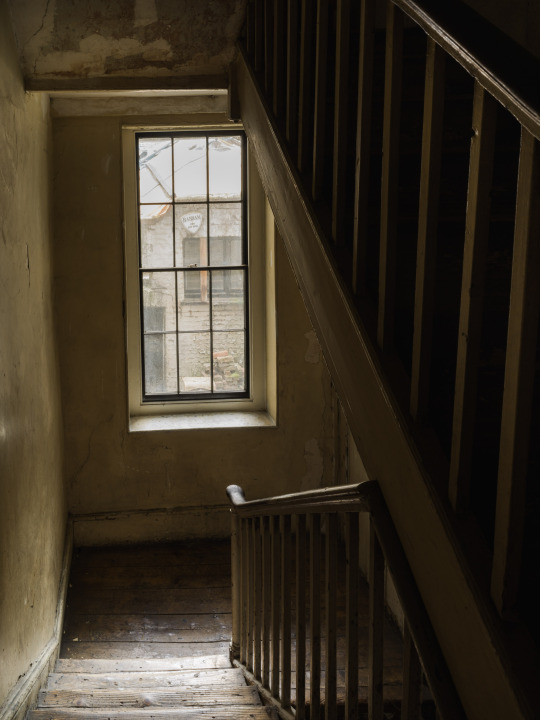
Lexington Street, Soho
Photographed by Freddie Ardley
#photographers on tumblr#photography#architecture#architect#interiors#interior design#travel#london#soho#dark#historic#story#lit#city#urban#writing#inspiration
490 notes
·
View notes
Photo

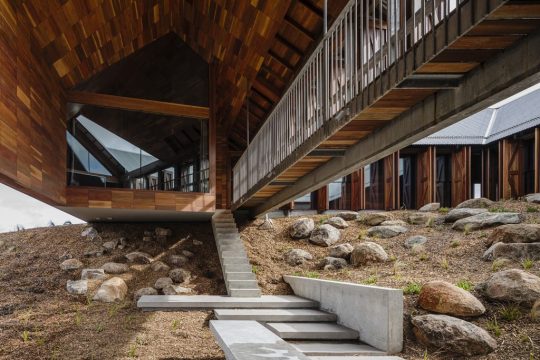
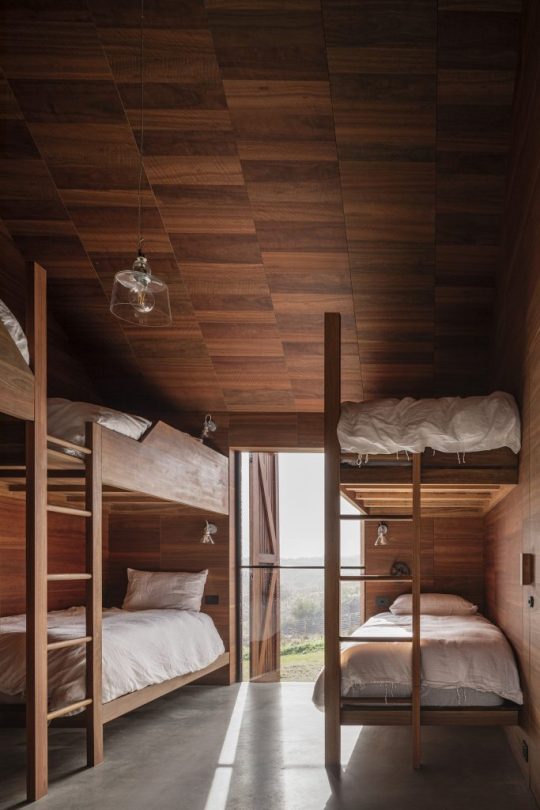

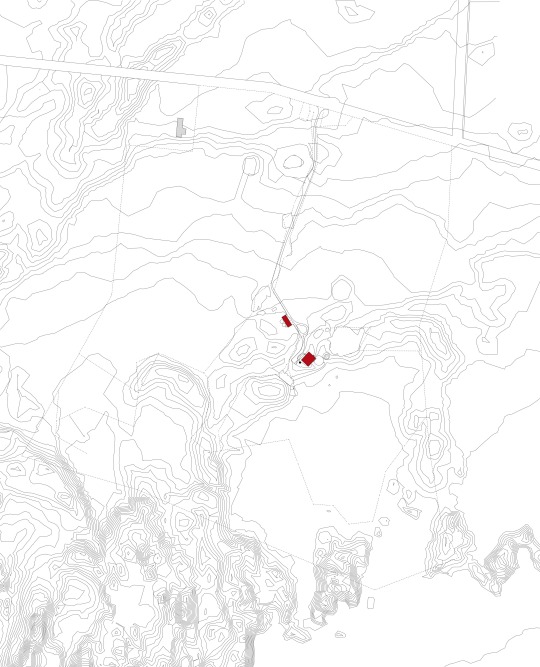
For the Architectural Review
Bass Coast Farmhouse in Victoria, Australia by John Wardle Architects
Calvin Po
For the architectural profession, building on the unceded lands of Indigenous people is a conflicting proposition, yet one that is almost inevitable for architects in Australia. Bass Coast Farmhouse, by John Wardle Architects, is one such project, built on former farmland among coastal heath reserves off the Bass Strait in Victoria. As they do with all their projects, the architects acknowledge the Traditional Owners, in this case the Boonwurrung people of the Kulin Nation.
Between the role of the architect, duty to their client, and wider questions of postcolonial ethics, these tensions permeate the house’s character and its distinctive relationship to the land. The Kulin Nation’s Tanderrum ceremony extends to outsiders a welcome to Country conditional on honouring the land and its intertwined relationships with its people: ‘The land ... is our mother. These cliffs are like our cathedrals, this is our church.’ On this sacral land, the architect’s exploration of ‘the nature of building on terra firma’ is not just an architectural fantasy, but a reflection of this quandary, and rejection of colonial myths of terra nullius – the land is not a blank slate.
From ecological footprint to the architectonics, this sensitivity is omnipresent. The house is entirely off-grid and the construction is largely prefabricated to minimise onsite waste and disturbance. The house sits gingerly on the ridge of a dune, making only the necessary contact with the ground. It is then cantilevered as the dune falls beneath the house. The cantilever, with its barn-like void and its suspended walkway, evokes an archaeological shelter, spanning over and shielding artefacts, and framing them for display. To enter the house, a set of stairs descends from this walkway as if down into geological strata of times past.
As for what is being sheltered – the dune and a scattering of stones – they too become imbued with new significance. After centuries of European colonisation, few traces of Boonwurrung heritage remain. It is the land itself, and the Boonwurrung people’s intergenerational custodianship of it, which is left to be protected. A critical part of the project is repairing parts of the site degraded by modern agricultural extraction, with a specialist advising on a massive replanting project for carefully restoring indigenous grass, shrub, and tree species. In contrast with the landscape, the house’s timber cladding (already silvering in the antipodean sun) and the corrugated galvanised steel roof seem to acknowledge its fleeting presence, relative to the long histories of the Kulin Nation.
The house is the antithesis of being ‘monarch of all [it] surveys’, to quote William Cowper’s poem on Alexander Selkirk, the British castaway in the Pacific. The Anglocentric ideals of Capability Brown’s Picturesque landscapes, where the earth itself is reshaped for the pleasure of the house’s gaze, are rejected. All the outward-facing windows, including the living room’s picture window, can be shuttered at a moment’s notice. For a house surrounded by expanses of nature and the coast, it is surprisingly introspective, with its primary aspect oriented around the central courtyard. The house is also extensive for a single-storey family home, with beds and bunks in polished, timber-panelled rooms, accommodating over a dozen people. But rather than bearing down on the terrain or asserting its panoramic dominion, the house seems to recognise that the views and the land are on loan, not owned.
John Wardle Architects, with its recently inaugurated Reconciliation Action Plan, joins others in Australia in re-evaluating their relationship with First Nations. But in the end, the impact a private house can have on reconciliation is limited. As Carolyn Briggs, a senior Boonwurrung elder, once reflected, ‘I’m always trying to find markers that inform me that we still have a part in this place. ... I think it would be amazing if you can start to read the land and wonder about the history of the people who lived and died before we were here. Hopefully one day you’ll know it. But we can’t see that now in the built environment.’
Link to original article here.
#writing#journalism#architectural writing#architectural criticism#critique#architectural journalism#New Architecture Writers#building#building study#building review#architecture#Architectural Review#John Wardle Architects
1 note
·
View note
Text
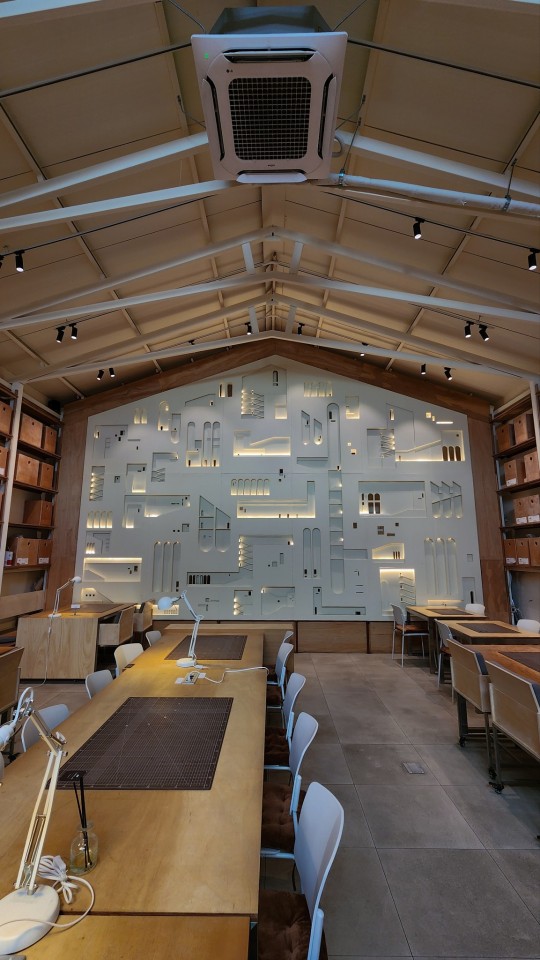
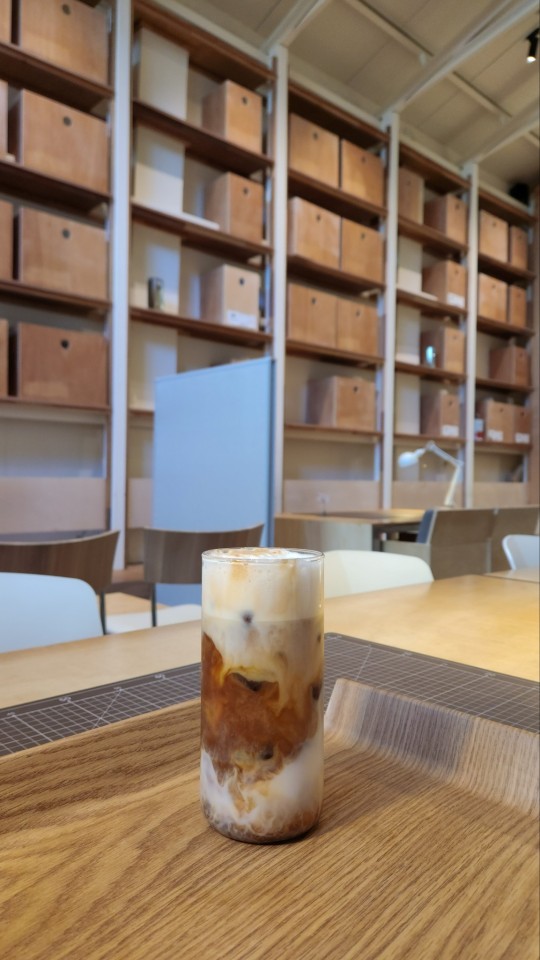
Worked on my midterm paper in an interesting cafe. It was architecture-themed🤍
The latte was so good! It was just the right amount of milky.
#books and coffee#booksbooksbooks#coffee and books#coffee#books and reading#dark academia#desi academia#aesthetic#cafe aesthetic#cafe hopping#desi tumblr#study cafe#dark academia moodboard#dark acadamia aesthetic#dark acamedia#studyspo#study blog#study aesthetic#coffee and writing#coffee and chill#coffee and music#architecture#cafe design#studyblr#study motivation#cottagecore#books and libraries#books and literature#study with me#study with inspo
265 notes
·
View notes
Text

Tripitaka Koreana, Korea,
Carved on 81258 woodblocks in the 13th century - is the most successful large data transfer over time yet achieved by humankind. 52 million characters of information, transmitted over nearly 8 centuries with zero data loss - an unequalled achievement.
The Tripitaka Koreana, stored in Haeinsa, a Buddhist temple in Gayasan National Park, South Korea, is the most comprehensive and oldest version of the Buddhist canon, with no known errors in its 52 330 152 characters which are organized in over 1496 titles and 6568 volumes.
Will Pryce Photography
#art#design#architecture#interior design#interiors#korea#library#books#will price#tripitaka#palman daejanggyeong#scripture#buddhism#buddhist#vintage book#writing#history#style#woodblock#haeinsa#temple#gayasan#millwork#birch wood#blocks
621 notes
·
View notes
Text



#art#quotes#motivation#words#aesthetic#travel#poetry#writing#poets on tumblr#writers#books and libraries#love#literature#books libraries#culture#poetas en español#beauty#writers on tumblr#inspiration#architecture
3K notes
·
View notes
Text
979 notes
·
View notes